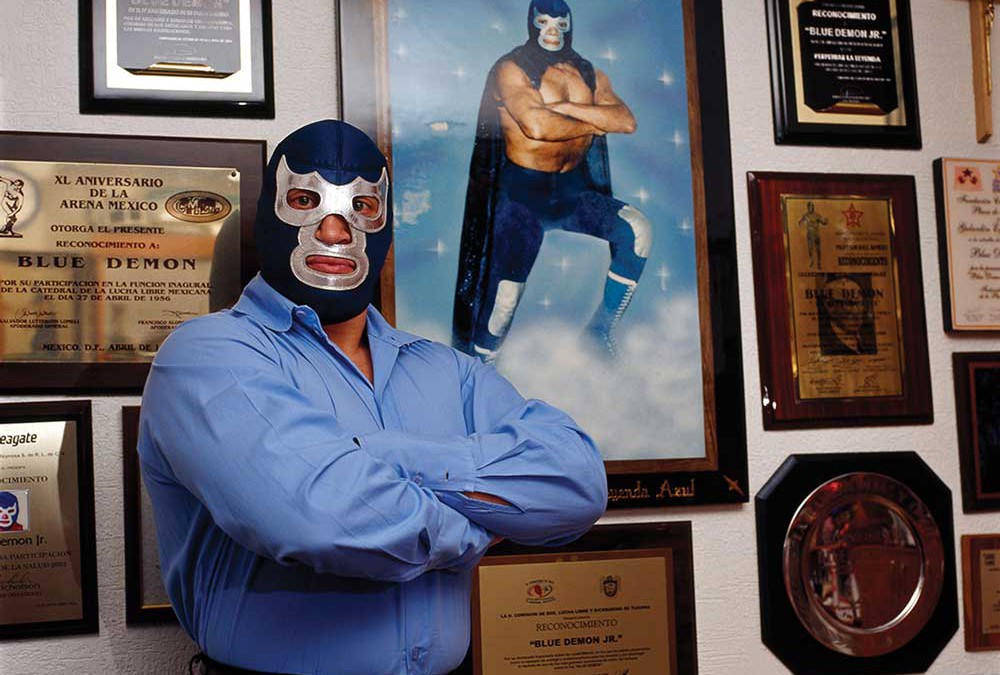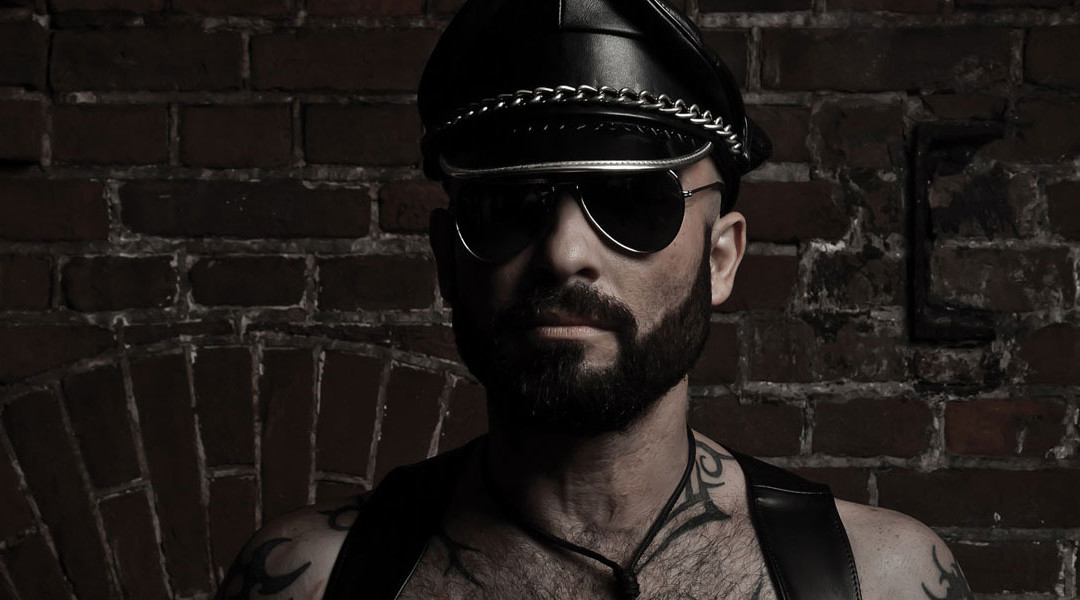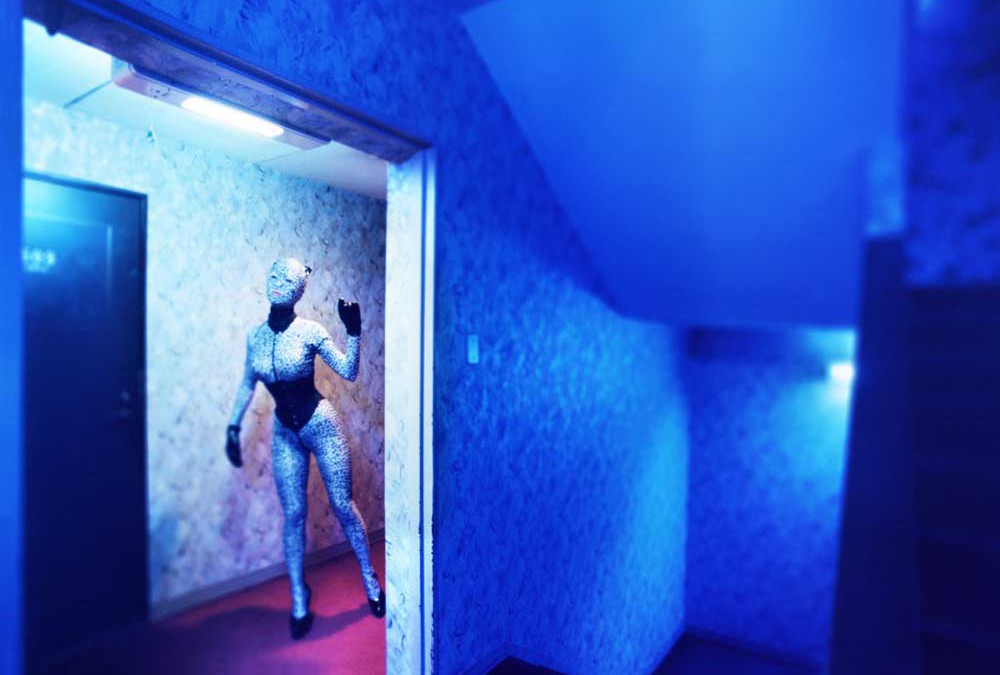Geen Resultaten Gevonden
De pagina die u zocht kon niet gevonden worden. Probeer uw zoekopdracht te verfijnen of gebruik de bovenstaande navigatie om deze post te vinden.

Text JF. Pierets Photos Lourdes Grobet
For thirty years photographer Lourdes Grobet has penetrated the world of one of the most popular sports and deep-seated traditions in Mexico: Lucha Libre-wrestling. She documented the lives of the fighters inside and outside of the ring.
Lucha Libre (Spanish: Free wrestling, lit. “free fight”) is a term used in Mexico for a form of professional wrestling. Being mostly a regional phenomenon in the early 1900’s, professional wrestling remained in Mexico until Salvador Lutteroth founded the Empresa Mexicana de Lucha Libre (Mexican Wrestling Enterprise) in 1933, giving the sport a national foothold for the first time. Grobets childhood was very different from what it is today. She was a rich girl from Lomas de Chapultepec, one of the oldest and most exclusive residential areas of Mexico City. Her classes were taught by nuns and, wearing a uniform, she rode to school in a black Cadillac. She was an athletic girl and her father, a professional cyclist, obligated her to exercise before going to school. This was a routine that allowed Grobet to lead a life without physical setbacks.
As a young woman she was determined to get away from the upper class lifestyle she was used to. “I was always rebellious and that saved me from being stuck as a good girl for the rest of my life”, she recalls. “I never wasted time trying to make money, or getting my own Cadillac.The times I watched fights on television were moments of splendor and leaps of joy but, because I was only a child, my parents never wanted to take me to the arenas to see the action for real. It was quite a mystery to me how my father, being such a lover of sport, would not take me there. It’s ironic that years later I have devoted so much into documenting this spectacle.”
In 1942, Lucha Libre would change forever when a silver-masked wrestler, simply known as El Santo (The Saint), first stepped into the ring. He made his debut in Mexico City by winning a battle royal for eight men. The public became enamored by the mystique and secrecy of Santo’s personality, and he quickly became the most popular luchador in Mexico. His wrestling career spanned nearly five decades, during which he became a folk hero and a symbol of justice for the common man through his appearances in comic books and movies, while the sport received an unparalleled degree of mainstream attention. “I had promised myself not to take pictures of any folkloric bias, but in doing portraits of fighters I found something so deeply Mexican that I was very intrigued. Meeting the fighters gave me another perspective and the one who struck me the most was El Santo. His generosity in dealing with people filled me with joy.
I couldn’t believe that the most famous man in Mexico could be so humble. I hate power, fame, and money because they corrupt people. El Santo broke the hold of fame and never had to be the center of attention, he just didn’t give a damn.” Grobet took the still photographs for one of El Santo’s films and confirmed that he wasn’t using tricks. “He didn’t use a double or strike star poses. When he finished filming there were endless lines of people waiting for an autograph. El Santo stood there and patiently signed his name up to the last person. He gave me a great deal of lessons in generosity.“
Staying anonymous by wearing a mask is a very important part of the Lucha Libre. These warriors need their disguise, because appearance is not only a fine adornment characteristic in the world of wrestling but also a weapon with which to disconcert, astonish, and frighten their opponent. Warriors are transformed by the sublime pleasure of becoming stoically anonymous. Their audience knows they may be well-known legends, but their private lives must remain a secret, for their epic fantasy plays out confrontation between normal, everyday environmental design and their particular mystery. The visual appeal – especially when set in scenarios outside the ring – was quickly apparent to Grobet. In Lucha Libre: The Family Portraits, Grobet shows the wrestlers with their mothers, wives and girlfriends, sitting for what would almost be a generic family portrait, but for the fantastic costumes of the luchadores themselves. By this simple gesture we are brought to the threshold of their identities – and held there. The ungainly, monstrous and splendidly defiant stance they convey with this final preservation of anonymity is of course what gives Grobet’s pictures their edge.
Despite all these great stories you have to keep in mind that Grobet is the only woman whose lens has captured the magic of this exciting sport that is much talked about but known very little of. The only woman who worked in the arena for thirty years. She evolved from taking pictures during fights into a frequent visitor to the private homes where the wrestlers meet, celebrate their victories and live their everyday lives. “The fighters are generous and respectful people. When I started I was young and pretty. Nobody ever failed me in that regard. We began to build relationships; we got to know one another. It didn’t take much to get into dressing rooms even though the majority of the wrestlers are men. I was spending time in gyms and eventually it was just another part of the job, like documenting an office in another profession. Instead of positioning myself as a woman, I was always more interested in myself as an independent human being who doesn’t bow down to anyone. I’ve never been much of a flag-waver and my attitude has been rather unorthodox, but I have fought for women’s rights and equality. What I’ve always rejected is the kind of imported, middle-class feminism that doesn’t correspond to the reality of Mexican women.”
Grobets passion for this sporting ritual has led her to gather not only thousands of photographs, but a vast collection of wrestling posters and programs, newspaper clippings, postcards, flyers, magazine covers, movie posters, stickers, and diverse objects that form part of wrestling paraphernalia. Still, Grobet says she is a “bad portraitist” because she shows people as they are and sometimes people want to be different, better. “I don’t put anyone in a pose. I was invited to their homes, I arrived, sometimes we ate – in fact the mother of Los Brazos was a great cook – and with that feeling of closeness I went to work. Their homes were wonderful. Sometimes people think that I composed the pictures but I never did. You simply enter the house and you don’t know where to look first. Everything is interesting, it’s a marvel of icons and objects.”
Grobet promised her fighters that she would make a book, and she delivered. In 2005 she published Espectacular de Lucha Libre, an effort that brought together a vast collection of images. Grobet has done more than twenty solo shows and, with her transparent and yet kaleidoscopic reflection of an eclectic, suggestive outlook on life, she became one of Mexico’s leading contemporary photographers.
De pagina die u zocht kon niet gevonden worden. Probeer uw zoekopdracht te verfijnen of gebruik de bovenstaande navigatie om deze post te vinden.

Text Josie Pyke Photos Jan van Breda
Heavily set, rugged and fiercely hyper-masculine, these are males who convey strength, identity and are an ever-growing subculture of the lesbian, gay, bisexual and transgender (lgbt) population. Welcome to the “bear” community.
Evolving in the 1980’s, with a carefree effervescence, this social movement of homosexual males has increasingly become an influence and a symbol of many things, from self-expression to self-identity, from literature to fashion. Literally taken from the English noun “Bear”, these hairy, thick-set males gained this status due to their acceptance of their masculinity. How one defines a Bear is ambiguous. Some refer to it as a way of life, a social movement. Others see it as an image or a perception, more based around aesthetics. Yes, bears have grown in society because of their image, but it’s an image of free-will. There is no rule book within the Bear community that says you have to look thin, well groomed and effeminate, to be classed as a homosexual male.
Even though the Bears on the surface seem a positively unpretentious community, there are several subcultures, sometimes known to be quite strict. There have been debates as to what actually constitutes these subcultures. Younger or aspiring bears are labelled cubs or otters. Otters are the slimmest type of Bear with finer hair, cubs can be as hairy as they like, but are typically younger looking: a baby bear. The wolves exhibit maturity and masculinity and are usually the older and more dominant males. Bearded, larger male covered with a blanket of hair? You’re a definite grizzly. Muscle Bears speak for themselves and have created a successful separate culture to the rest. Their muscular, body builder status has become a demand within gay culture and events such as Mr Muscle Bear pageants are a growing demand. These muscle Bears are known to shun the idea of cubs or the otters being part of the community. Adversely, the muscle Bears have the same idea of Bears with higher body fat, often referred to as “Chubs”. Muscle Bears and their culture have been known to exclude males who do not conform to their standards of a “real Bear”.
Whether you’re a cub, a grizzly, or simply just an admirer, BEAR Magazine caters for all varieties of Bear lovers. 1985 saw the beginning of the Magazine. Published by Richard Bulger in 1987, it was released as an alternative to the mainstream gay men’s mags. It featured erotic content including stories, photos and even dating ads which allowed the readers to meet other likeminded males, making BEAR magazine a successful network. Men would also submit photos of themselves to be featured in the magazine. Although under new direction, BEAR Magazine is still growingly popular in the USA and gracing the top shelves, it’s also available digitally. Two years after Bear Magazine came the Lone Star Saloon, also known as “Bear Bar USA”. Set in San Francisco, the Saloon is known as a defining point in Bear history.
It infamously provided Bears and bikers with a source of familiarity and welcoming. Now known as the world’s most famous bear bar, the Lone Star Saloon is still in full swing today. The bar holds an annual “International Bear Rendezvous” as well as monthly “Cubcake” parties for fans of the younger less masculine bears known as the Cubs. The late eighties became the rise of The Bear Hugs Group and private “play parties”.
Described as inhibited and erotic, these private liaisons provided bears with a safe, intimate environment to meet, play and often result in orgies. Spreading the love of the bear community overseas, these groups and parties reached Great Britain and soon after, steamy hot tub parties known as “Bear Soups” were introduced. Flemish fashion designer and self proclaimed Bear, Walter Van Beirendonck, known for his powerful colour combinations and unconventional context, brought Bears to the catwalk. In preparation for his summer 2010 fashion show, bored of casting for regular male models, Beirendonck held an open casting call for “Muscle Bears”. Understanding the shock element he would be giving to the public, Beirendonck says for him, although there’s a sexual attraction, he simply likes to see different body types on the catwalk. He describes the Bear scene as a “nice vibe” not caught up in drugs or heavily focused things like SizeGenetics penis enlargement and have their minds on sex, they’re a “positive scene” and a welcomed contrast.
Continuing to excel Bears as symbols of vanity and fashion, International Mr Bear contests are now a global event. This wonderfully masculine beauty pageant, in which the winner becomes the symbol and representation for bears in their hometown, first started in Bear birthplace San Francisco 1992, but has now spread to Germany and the UK. The categories for Mr Bear are Grizzly, Cub, and Daddy, with one winning the overall title. There are various Bear comics by Jeff Jacklin, contributing to Bears recognition in the media. These fantasy bear worlds have been known to excite Bear readers with their stories of powerful muscle Bears teamed with fabulous comic book art.
Today, Bears are role models of self belief and confidence, a fierce display of all types of masculinity in this fabulous, rapidly expanding sub culture of the LGBT community. Bears are considered symbols of sex, fashion and lifestyle and have created a whole new category within the LGBT community. If that’s not impressive enough… . What I love most about the Bear community is their desire to break the enclosed stereotype of homosexuality. Right from the beginning, they said no to generalisation. In the 21st century, there are enough problems with generalising as it is, but the Bears questioned the fixed idea that a man had to be thin, hairless and young to be accepted as part of gay culture. What’s wrong with being homosexual but still loving yourself as a man? According to the Bears, absolutely nothing.
De pagina die u zocht kon niet gevonden worden. Probeer uw zoekopdracht te verfijnen of gebruik de bovenstaande navigatie om deze post te vinden.
